In the battle of the racquets, a fierce competition has emerged between pickleball and tennis. As players flock to the courts, an age-old question looms: which court is the true sporting champion? Is it the mighty tennis court, with its elegant lines and formidable presence? Or perhaps it is the cunning pickleball court, with its compact dimensions and lightning-fast gameplay. This article offers a great sporting showdown that will delve deep into the differences, the nuances, and the strategies that make these courts unique. So lace up your sneakers, grab your paddle or racket, and explore the ultimate showdown: Pickleball Court vs. Tennis Court.
Pickleball and Tennis Differences and Similarities
Rules
Besides the key differences in court size, scoring, and equipment used between pickleball and tennis, there are other notable differences when it comes to rules. In pickleball, players must serve underhand diagonally to the opponent’s service court, while in tennis, serves can be overhand or underhand to any part of the opponent’s service box.
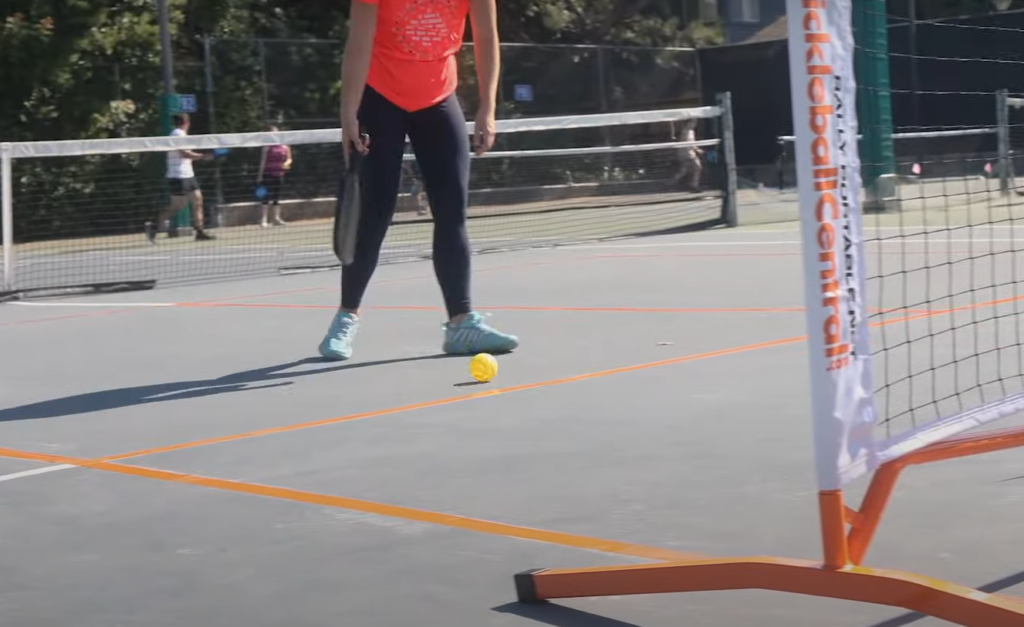
Another major difference is the double bounce rule in pickleball. In this sport, players must let the ball bounce once on their side before returning it, while in tennis, a player can hit the ball out of the air without letting it bounce.
On the other hand, both sports have similar rules regarding faults and lets. In both pickleball and tennis, a serve that does not land in the opponent’s service box is considered a fault, and the server gets another chance. Additionally, if the ball hits the net on a serve but lands in the correct area, it is considered a let and can be re-served.
Strategy
Strategy plays an essential role in both pickleball and tennis. In pickleball, players must rely on quick reflexes and agility to return shots from their opponents, as the court is smaller and the ball moves at a faster pace. On the other hand, tennis requires players to have a mix of power and precision in their shots due to the larger court size.
A notable distinction in strategy between pickleball and tennis lies in the positioning of players on the court. In pickleball, players are encouraged to stay in close proximity to the net, engaging in frequent volleys that require quick reflexes and precise placement. Conversely, tennis players tend to position themselves further back, relying on powerful groundstrokes to control the game. This divergence in approach is a direct consequence of the smaller court size in pickleball, which allows players to cover the entire court with relative ease. By adapting their strategies to these unique characteristics, players can fully embrace the distinct challenges and dynamics presented by each sport.
Equipment
Another major difference between pickleball and tennis is the equipment used. In pickleball, players use a solid paddle made of either wood, composite materials or graphite to hit a plastic ball with holes. On the other hand, tennis players use a strung racquet to hit a rubber ball covered in felt.
The choice of equipment in pickleball and tennis can have a significant impact on gameplay. In pickleball, with its smaller court size, players have the advantage of using a lighter paddle. This allows them to maintain maneuverability while still generating enough power to execute effective shots. On the other hand, in tennis, where the court is larger and more power is required, players typically opt for heavier racquets. The added weight helps generate the necessary force to hit powerful shots and cover the larger playing area [1].
Scoring System
While there are some similarities in the scoring system of pickleball and tennis, there are also key differences that make each sport unique. In both sports, a point is awarded when a player wins a rally. However, in pickleball, only the serving team can score points, while in tennis, both teams can score.
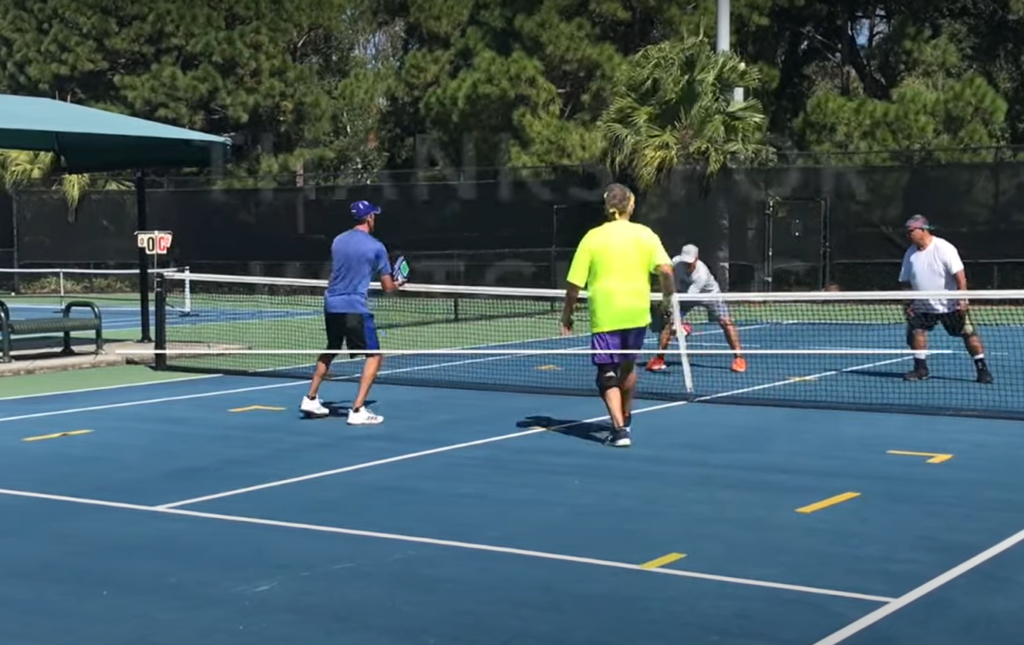
Points are counted differently as well. In pickleball, points are only scored when serving and are counted in multiples of 1, while in tennis, points can be scored on any serve and are counted as 15, 30, 40, and game. Additionally, both sports have different methods for determining the winner when a game is tied at deuce.
Health benefits
Both pickleball and tennis offer numerous health benefits for players. Both sports require constant movement and physical exertion, making them excellent forms of cardiovascular exercise. In addition to improving overall fitness and endurance, both sports also help with hand-eye coordination, balance, and agility.
Since pickleball is played on a smaller court with slower-moving balls, it may be a more accessible option for players with knee or joint problems. On the other hand, tennis’s larger court and faster pace may provide a more intense workout for those looking to challenge themselves physically.
Pickleball Court vs. Tennis Court
Netting
A net for pickleball court and a tennis net for are made of different materials and have different sizes. A pickleball net is made of nylon or mesh fabric, whereas a tennis net is typically made of polyester. This difference in materials is due to the nature of their respective sports.
This lower net height allows players to return shots with greater ease. In comparison, tennis nets are set at a standard height of 42 inches for both singles and doubles play.The difference in net heights stems from the nature of gameplay in each sport. In pickleball, the ball is played closer to the ground and requires less power, making a lower net height more suitable. Tennis, on the other hand, involves longer rallies and faster-paced shots, which require a higher net for better clearance [2].
Court Size and Surface
The pickleball court measures 20 feet wide by 44 feet long, while a tennis court is 27 feet wide by 78 feet long. This difference in size makes pickleball courts easier to fit into smaller spaces, making it more accessible for players.
Another key difference between the two sports is the playing surface. Pickleball courts are typically made of concrete or asphalt, while tennis courts can have a variety of surfaces such as grass, clay, or hardcourt. This difference in surface affects the speed and bounce of the ball, requiring players to adapt their playing style accordingly [3].
Singles and double courts
In pickleball, the court size remains consistent for both singles and doubles matches, measuring 20 feet wide and 44 feet long. This compact size allows players to cover the court more effectively, encouraging quick reflexes and strategic shot placement.
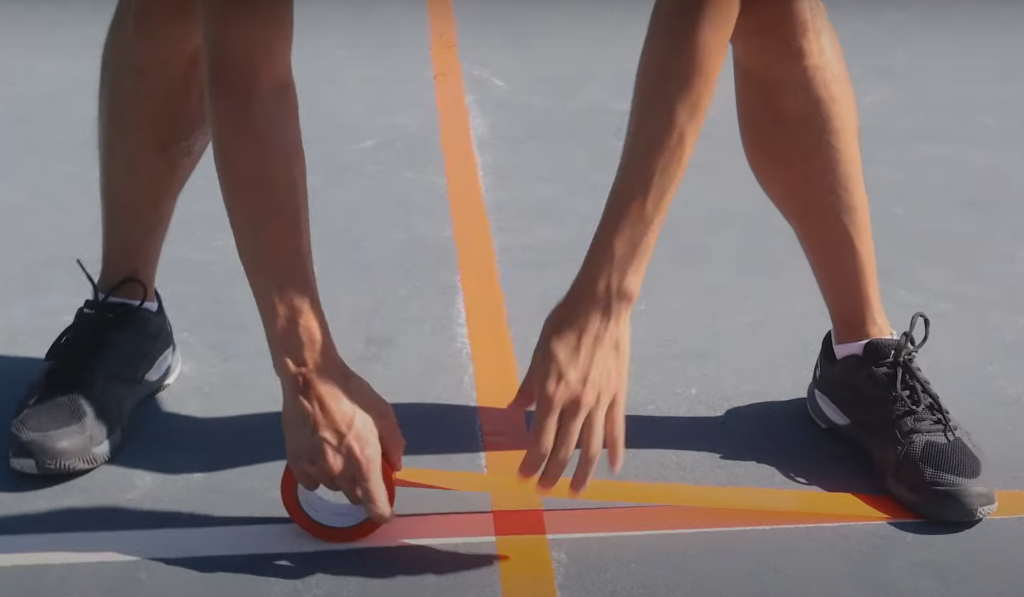
On the other hand, tennis courts for doubles play are wider, spanning 36 feet in width and 78 feet in length. This larger size accommodates the longer rallies and wider shot angles that often occur in doubles matches, requiring players to cover a greater distance and rely on teamwork to outmaneuver their opponents. So, while both sports offer unique court dimensions, they are tailored to enhance the gameplay experience in their respective formats.
Racket and Ball Differences
Pickleball rackets, with their compact size measuring between 6-7 inches wide and 15-16 inches long, offer a unique advantage to players. This smaller size not only allows for better control and finesse in shots but also promotes quicker reaction times on the court. By wielding a pickleball racket, players can navigate the game with precision, strategically placing shots with finesse and agility, creating an exhilarating gameplay experience that sets it apart from tennis.
The difference in ball sizes is not only significant but also contributes significantly to the gameplay experience. A pickleball, which resembles a wiffle ball, measures around 2.87 inches in diameter, slightly larger than a standard tennis ball with a diameter of 2.7 inches. This slight variation in size may seem insignificant, but it has a profound impact on the game dynamics. The smaller size of the pickleball makes it incredibly easier to hit and maneuver, allowing players to engage in longer rallies and strategically place their shots with precision and finesse. So, next time you step onto the pickleball court, remember that even the smallest details, like ball size, can make a world of difference in your overall playing experience.
Pickleball Court and Tennis Court: Tips for maintenance
Pickleball and tennis are two of the most popular sports in the world. These games require a lot of skill, agility, and technique to excel at. However, to be able to play these games efficiently, it is important to have well-maintained courts.
Maintenance of pickleball and tennis courts is not only necessary for the safety of players but also for their performance. A worn-out court can affect the bounce and speed of the ball, resulting in an unfair advantage for one player over another. It can also lead to injuries due to uneven surfaces or debris on the court.
Cleaning
To ensure optimum performance and longevity of your pickleball or tennis court, it is crucial to prioritize cleanliness and regular maintenance. Begin by diligently sweeping or utilizing leaf blowers to eliminate any dirt, leaves, and debris that may accumulate on the surface. This meticulous approach prevents the accumulation of particles that could potentially disrupt the smooth playing experience.
Avoid the usage of harsh chemicals, as they may inadvertently cause damage to the court’s material composition and create a slippery surface, thereby increasing the risk of injuries.By adhering to these thorough cleaning practices, you can ensure that your pickleball or tennis court remains in impeccable condition, providing an optimal playing environment for all enthusiasts.
Repairing
Regularly inspect your court for any cracks, holes, or tears on the surface. These imperfections can occur due to the natural wear and tear that comes with playing pickleball or tennis, as well as exposure to extreme weather conditions or heavy usage. It is crucial to promptly address these issues to prevent them from worsening and causing further damage to your court.
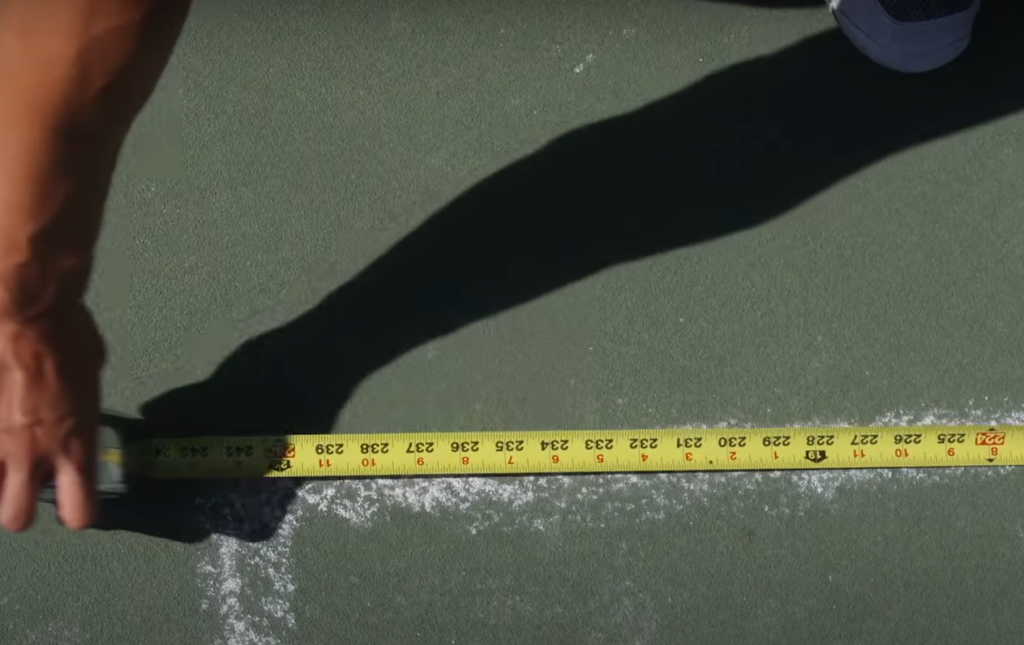
For minor cracks and holes, consider using a high-quality sealant specifically designed for pickleball or tennis courts. These sealants are formulated to effectively fill in the gaps and provide long-lasting protection against future damage. Applying this sealant not only helps to maintain the integrity of your court but also ensures a smoother playing surface for optimal performance.
In the case of larger damages, it is highly recommended to seek professional assistance for repair. Professional court repair experts possess the necessary expertise and equipment to accurately assess the extent of the damage and execute the appropriate repairs. By entrusting your court to professionals, you can have peace of mind knowing that the repairs will be carried out with precision and in accordance with industry standards.
Remember, by regularly inspecting and promptly addressing any cracks, holes, or tears on your court, you are taking proactive steps in preserving its longevity and ensuring a safe and enjoyable playing experience for years to come.
Resurfacing
Over time, the surface of a pickleball or tennis court will wear out and become too slippery or uneven. In such cases, resurfacing is necessary to restore the court’s performance and safety. This process involves removing the old surface, repairing any damages, and applying a new layer of coating.
Resurfacing should be done every 3-5 years, depending on the amount of usage and weather conditions. It is also important to choose a high-quality resurfacing material that can withstand heavy usage and extreme weather.
Net Maintenance
Maintaining the nets of pickleball and tennis courts is crucial for ensuring a safe and enjoyable playing experience. In addition to regularly checking the tension of the net and promptly adjusting it if necessary, it is essential to inspect the net for any signs of wear and tear. Replace any torn or damaged nets immediately to prevent accidents and maintain the integrity of the game. Furthermore, it is highly recommended to take down the nets during extreme weather conditions, such as strong winds or heavy rain, to safeguard against potential damage that could compromise the longevity of the nets and court.
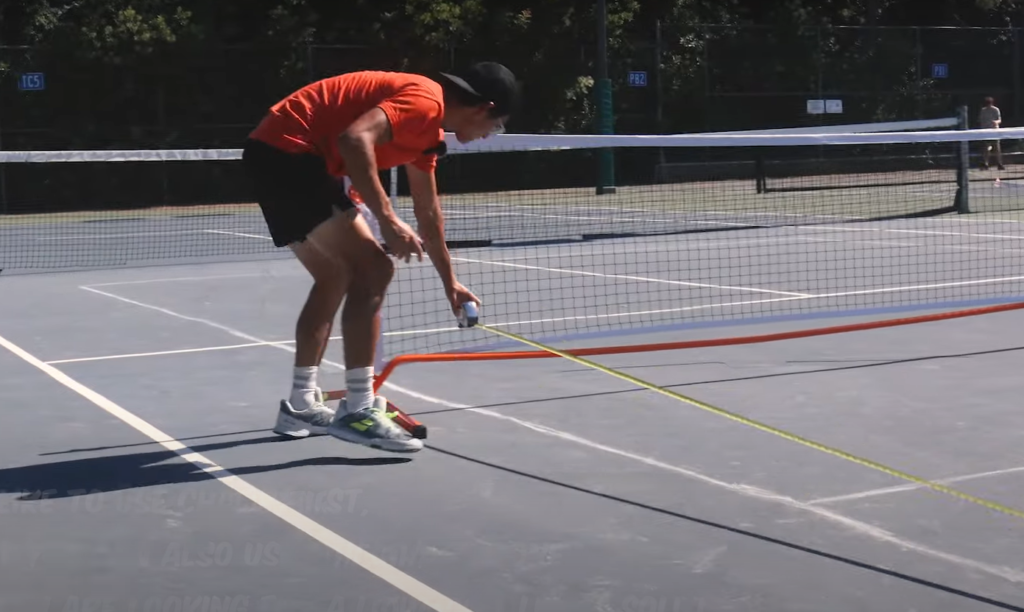
Proper maintenance of pickleball and tennis courts is essential for enjoyable and safe gameplay. By following these tips, you can ensure that your court remains in top condition for players to enjoy for years to come. Remember, a well-maintained court not only benefits the players but also adds value to your property.
FAQ
Can you play pickleball on a regular tennis court?
Yes, you can play pickleball on a regular tennis court. In fact, many people use tennis courts to play pickleball since the dimensions of a standard tennis court are very similar to those of a pickleball court.
However, there may be some slight adjustments needed when playing pickleball on a tennis court. For example, the net height for pickleball is 36 inches while the net height for tennis is 34 inches. This may require some modifications to ensure fair play.
Additionally, pickleball players may also need to be mindful of tennis lines on the court which may interfere with their game. It is recommended to use temporary masking tape or chalk to mark out a designated pickleball court within the boundaries of a tennis court.
Overall, playing pickleball on a regular tennis court is possible and can be a great option for those who do not have access to a dedicated pickleball court. Just be sure to make the necessary adjustments and consider any potential interference from tennis lines.
Can pickleball be played indoors?
Yes, pickleball can definitely be played indoors. This makes it a year-round sport that can be enjoyed regardless of the weather.
Indoor pickleball is typically played in a gymnasium or sports complex that has enough space for a standard pickleball court. The rules and equipment used for indoor pickleball are no different from outdoor pickleball, so players can expect a similar experience.
One advantage of playing indoors is that there is less impact from elements such as wind or sun, which can affect gameplay. Additionally, indoor facilities may also have proper lighting and smooth surfaces for better playability.
So whether it’s too hot or cold outside, you can still enjoy a game of pickleball by finding an indoor venue near you. There are also many tournaments and leagues that take place indoors, so be sure to check those out as well!
Are pickleball and tennis shoes the same?
No, pickleball and tennis shoes are not the same. While they may look similar in style, there are some key differences between the two types of shoes.
Pickleball shoes tend to have a thinner sole and more flexibility compared to tennis shoes. This is because pickleball involves more lateral movements and quick direction changes, while tennis involves more running and stopping on a larger court.
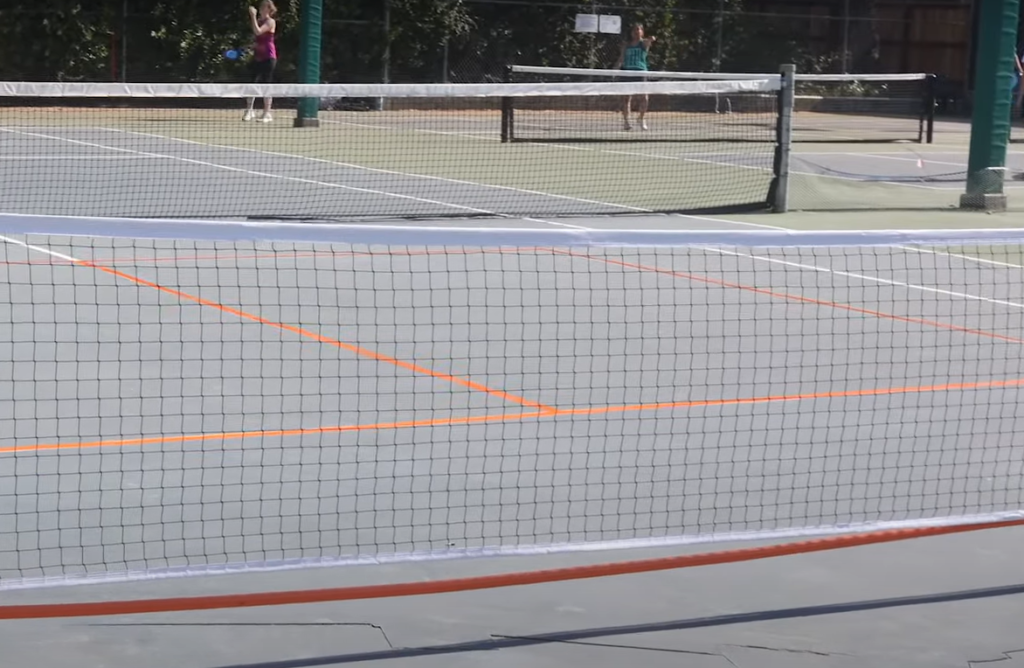
Additionally, pickleball shoes also typically have a non-marking sole, which is important for indoor play. They may also have added features such as reinforced toes and cushioning for added support during gameplay.
It is recommended to use proper pickleball shoes when playing the sport to prevent injuries and improve performance on the court. Investing in a good pair of pickleball shoes can make a big difference in your overall playing experience.
Can pickleball be played by people of all ages?
Yes, pickleball can definitely be played by people of all ages! One of the great things about pickleball is its accessibility and inclusivity.
Children as young as 6 years old can start learning and playing the sport, while seniors in their 80s and even 90s can continue enjoying it. The rules and equipment used can also be adjusted to accommodate players with physical limitations or disabilities.
Not only does pickleball provide a fun and engaging activity for people of all ages, but it also promotes social interaction and a sense of community. So whether you’re a child, teenager, adult, or senior, pickleball is a great sport to try and can be enjoyed by people of all ages.
Can pickleball be played on clay courts?
Technically, pickleball can be played on clay courts, but it is not the most ideal surface for the sport. This is because clay courts tend to have a slower and more unpredictable bounce compared to hard courts.
Additionally, playing pickleball on a clay court may require additional maintenance as the small balls used in pickleball can create indentations and disrupt the smooth surface of the court.
It is recommended to play pickleball on dedicated courts or hard surfaces for optimal gameplay. However, if a clay court is the only option available, be sure to communicate with other players and make any necessary adjustments for fair play. Overall, while it may be possible to play pickleball on clay courts, it may not provide the best playing experience. Instead, opt for playing on dedicated pickleball courts or hard surfaces to fully enjoy the sport.
Can you play tennis on a pickleball court?
No, it is not recommended to play tennis on a pickleball court. While the dimensions of a standard pickleball court may be similar to those of a tennis court, there are some key differences between the two sports.
Firstly, pickleball uses smaller courts and different equipment, such as a plastic ball and paddles, compared to tennis which uses larger courts and rackets. Additionally, the rules and scoring systems for the two sports are also different.
Trying to play tennis on a pickleball court may not provide a fair or enjoyable experience for either sport. So it is best to stick to playing each game on its designated court for optimal gameplay. However, if necessary, temporary adjustments can be made such as using a lower net height for playing tennis on a pickleball court. But overall, it is recommended to stick to playing each sport on its designated court for the best experience.
Useful Video: Playing Pickleball on a Tennis Court | NO Permanent Lines Needed
Conclusion Paragraph
So, tennis and pickleball courts can be quite similar. They both use a racquet and ball, they both have netted courts, and they both require quick movements and good hand-eye coordination. However, there are some key differences between the two sports that may make one more appealing than the other. These differences include court size, equipment used, and scoring system. In conclusion, if you are looking for a fast-paced, high-intensity game, tennis may be the better option for you. But if you prefer a more social and accessible sport, pickleball may be the way to go. Ultimately, both sports offer unique benefits and it’s up to personal preference which one is the best fit for you.
References:
- https://dinkpro.us/similarities-differences-pickleball-tennis/
- https://www.sportcourtlasvegas.com/blog/post/pickleball-court-vs-tennis-court
- https://pickleballsuperstore.com/blogs/pickleball-blog/pickleball-court-vs-tennis-court




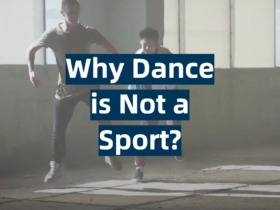
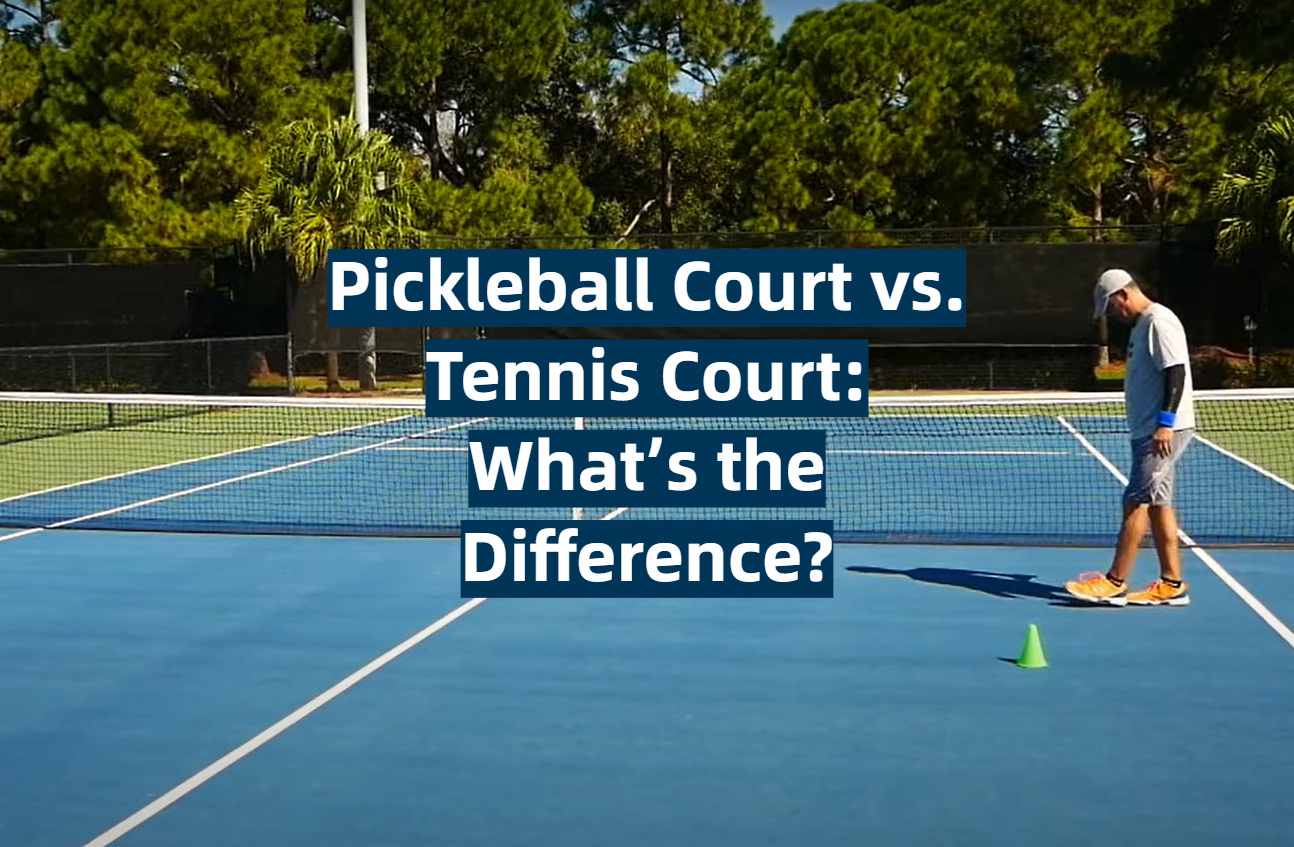
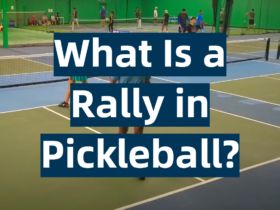
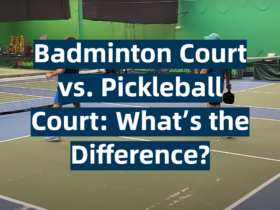
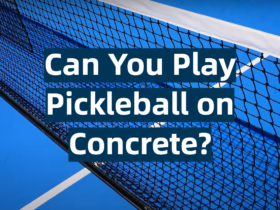
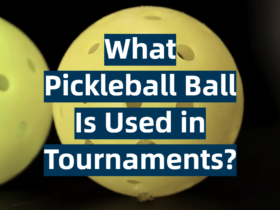
Leave a Review